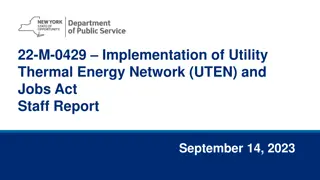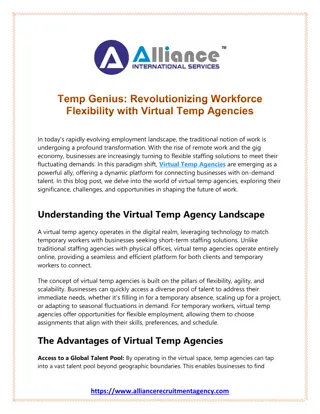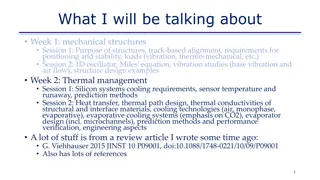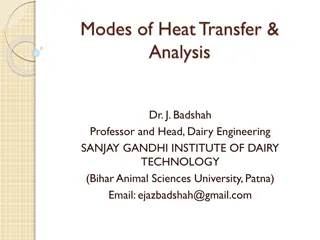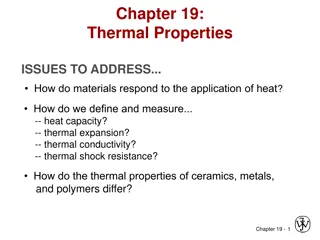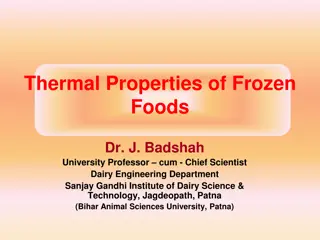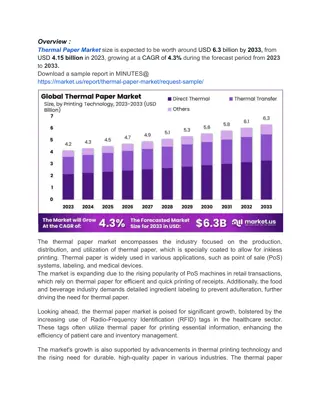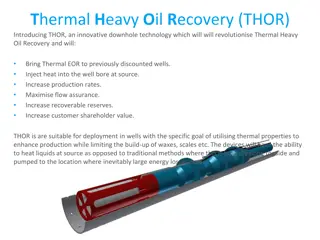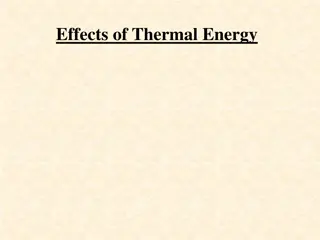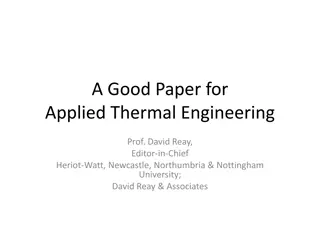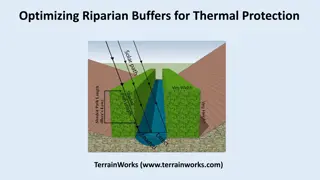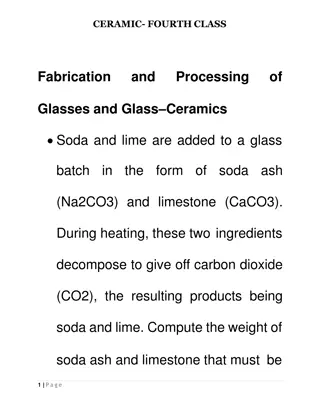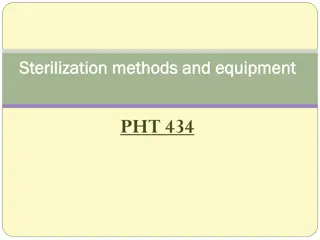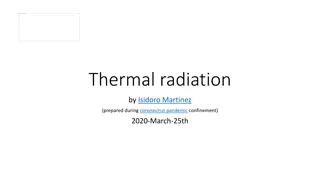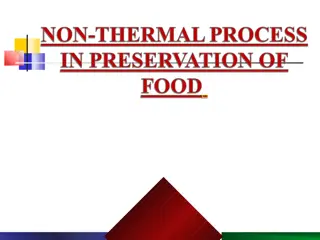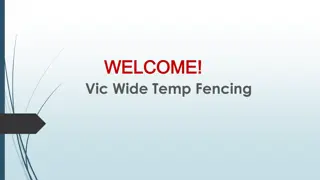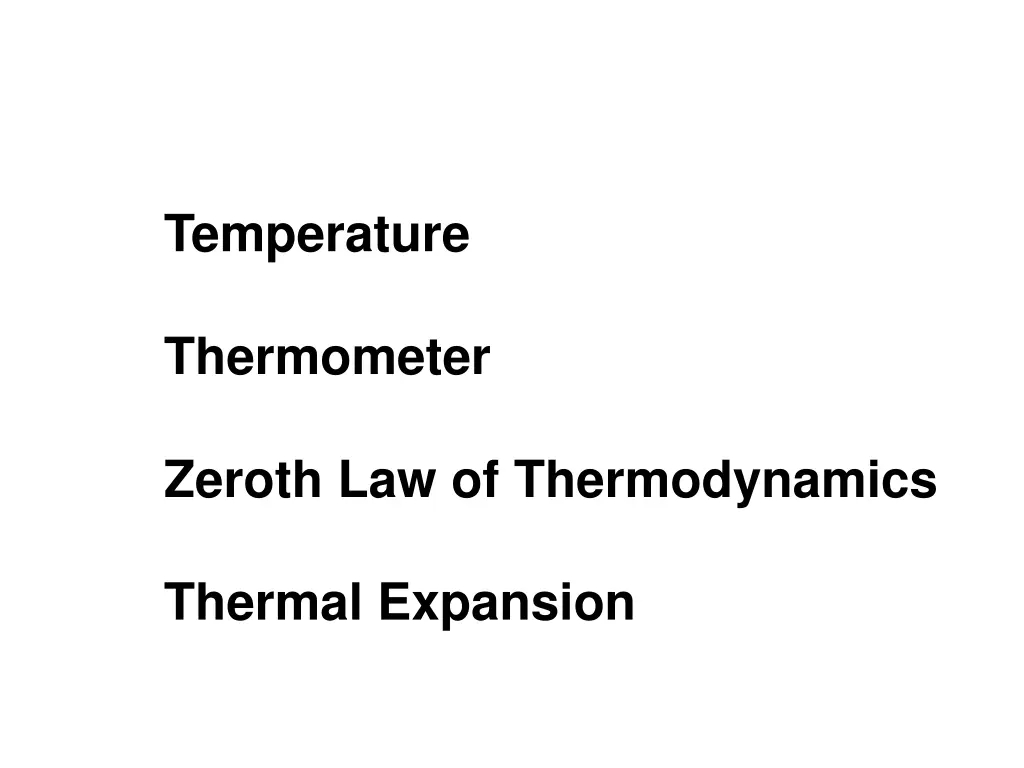
Understanding Thermal Expansion and Thermometers
Learn about temperature, thermometers, the zeroth law of thermodynamics, and coefficients of thermal expansion for solids and liquids. Discover the common temperature scales like Fahrenheit and Celsius, as well as the different types of thermometers that utilize various thermometric properties. Explore the concepts of linear, area, and volume expansion in objects with changing temperatures.
Download Presentation

Please find below an Image/Link to download the presentation.
The content on the website is provided AS IS for your information and personal use only. It may not be sold, licensed, or shared on other websites without obtaining consent from the author. If you encounter any issues during the download, it is possible that the publisher has removed the file from their server.
You are allowed to download the files provided on this website for personal or commercial use, subject to the condition that they are used lawfully. All files are the property of their respective owners.
The content on the website is provided AS IS for your information and personal use only. It may not be sold, licensed, or shared on other websites without obtaining consent from the author.
E N D
Presentation Transcript
Temperature Thermometer Zeroth Law of Thermodynamics Thermal Expansion
Common Temperature Scales Fahrenheit scale Celsius scale Boiling point 212 100 Unknown Tf Tc Freezing point 32 0 32 9 T 0 T f = = + c , 32 T T f c 212 32 100 0 5
Thermometers Thermometers make use of the change in some physical property with temperature, thermometric property. Thermometer Liquid (mercury) thermometer Thermometric Property Expansion of the liquid column Constant-volume gas thermometer Pressure of the gas Thermocouple Voltage (potential difference) Thermogram or Ear thermometer Infrared radiation Resistance Thermometer (RTD) Resistance
The Constant-Volume Gas Thermometer A The temperature at which the absolute pressure of the gas is zero, is the absolute temperature. It is found to be 273.150C or 0 K.
The Zeroth Law of Thermodynamics Thermoscope A calibrated Thermoscope is a Thermometer. The Zeroth Law of Thermodynamics: If body A is in thermal equilibrium with body T and body B is in thermal equilibrium with body T, then A and B are in thermal equilibrium with each other.
Linear Thermal Expansion = 0T L . L = the coefficient of linear expansion.
Area Expansion The area A0 of an object changes by an amount when its temperature changes by an amount T: = 0T A 2 . A where is the coefficient of linear expansion.
Volume Expansion The volume V0 of an object changes by an amount V when its temperature changes by an amount T: where (=3 , for solids) is the coefficient of volume expansion.
Coefficients of Thermal Expansion for Solids and Liquidsa Coefficient of Thermal Expansion, (C )-1 Linear ( ) Volumetric ( ) Substance Solids Aluminum Brass Concrete Copper Glass (common) 8.5 10-6 Glass (Pyrex) Gold Iron or steel Lead 23 10-6 19 10-6 12 10-6 17 10-6 69 10-6 57 10-6 36 10-6 51 10-6 26 10-6 9.9 10-6 42 10-6 36 10-6 87 10-6 3.3 10-6 14 10-6 12 10-6 29 10-6
Volumetric Thermal Expansion Coefficient (C )-1 Liquidsb Benzene Carbon tetrachloride 1240 10-6 Ethyl alcohol Gasoline Mercury Methyl alcohol Water 1240 10-6 1120 10-6 950 10-6 182 10-6 1200 10-6 207 10-6
Bimetallic Switch A bimetallic strip controls whether this coffee pot is (a) on (strip cool, straight) or (b) off (strip hot, bent).
The Expansion of Holes Do Holes Expand or Contract When the Temperature Increases? Answer: Expand.
Unusual Expansion of Water Most substances contract upon cooling. But, water expands while cooling from 4 0C until it freezes.
Bursting Water Pipes As water freezes and expands, enormous pressure is applied to the liquid water between the ice and the faucet. https://www.youtube.com/watch?v=4i5r65QGUpw

